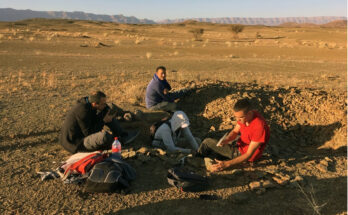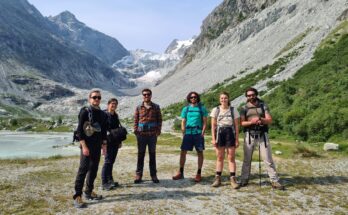Cette publication est également disponible en :
![]() Français
Français
Lukas Baumgartner shares with us a typical day. Alongside him, we wander from one laboratory to another. On today’s schedule: measurement launches punctuated by intense team discussions.
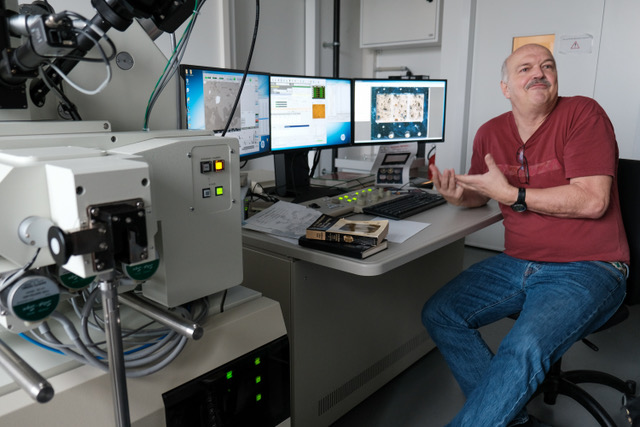
In front of three screens, concentrated on the complex settings of the Electron probe microanalyzer, Lukas Baumgartner from ISTE is about to make tonalite (granitoid) stones speak, extracted from an Italian site that he has been studying since his PhD.
Moving bodies that tell the story of Earth
Lukas Baumgartner wants to know everything about the chemical composition of these tonalites and the surrounding rocks – metamorphic sediments. But to understand his approach, we must first go back in time. A long time back.
The Earth was formed after the Big Bang, by accretion, gradually forming a core, which attracts the heaviest elements, a viscous mantle and a crust that hardened by cooling. In Lausanne, we walk on a crust of about 30 km thick that “floats” on the mantle. The flow of rocks between the crust and the mantle brings them to collide, to move apart, to plunge… These geological movements have consequences on the composition of the rocks, but also more global consequences. The formation of the Alps, for example, is one of them. The variations of CO2 in the atmosphere also result from these phenomena, which is not without importance in these times of global warming!
“I study a part of these mechanisms, a very small part!”
Lukas Baumgertner
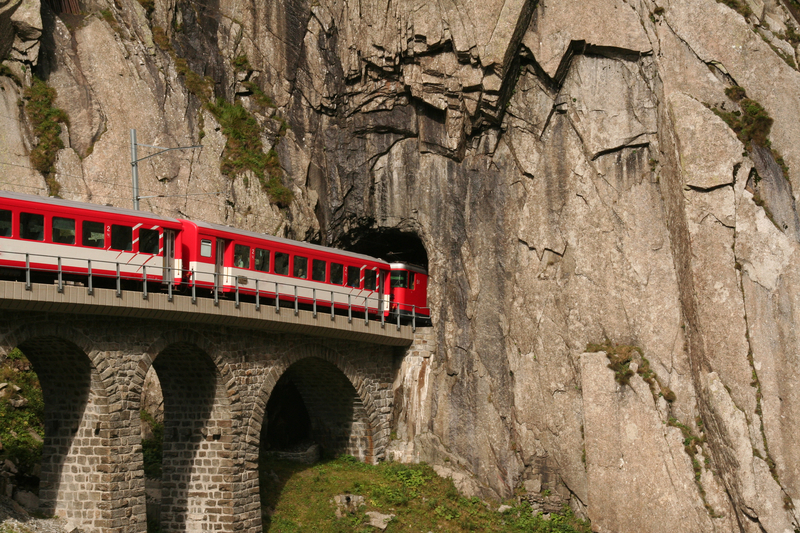
Big questions in a human-sized laboratory
To understand these flows of plutonic rocks under our feet, their thermal consequences and the life span of “thermal anomalies” linked to magma, different methods are available to geologists. Drilling is one of them, but the temperatures and pressures are so high at depth that one hardly goes beyond 10 km. The other solution is what Lukas Baumgartner is using here: studying the rocks accessible at the surface and tracing their history through their chemical composition. At the same time, he exposes minerals to high pressures and temperatures, and compares the consequences of these experiments with what we observe in nature. Finally, thanks to physical laws – such as the diffusion of heat in rocks, or the diffusion of elements in minerals such as garnet – we can estimate the chronology of geological phenomena, such as short igneous and metamorphic events.
In practice, the Electron probe microanalyzer sends electrons onto the thin section sample (picture below) and measures the emitted X-rays, characteristic for each element. This results in quantitative chemical analyses with high spatial resolution. For these delicate machines, qualified technical support is crucial. In this case, researcher Martin Robyr is always there in case of problems.
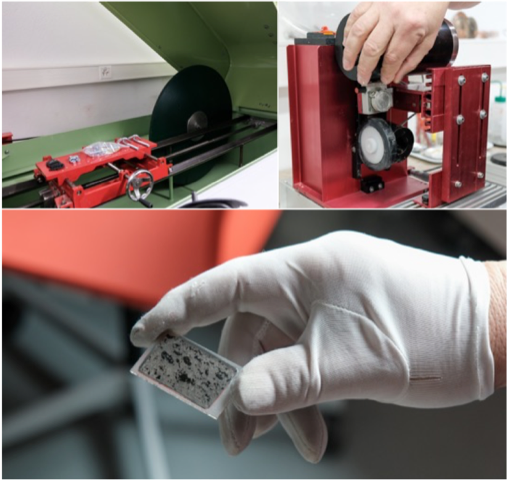
Here we are, the measurements are launched on the microprobe. While waiting for the results, Lukas moves on to a parallel project. This time, it is about foraminifera and climate history.
Climate change: an issue as old as the Earth
While scientists speculate about the intensity of future climate change, the temperatures that the Earth has experienced in the past are also being debated. Our window of observation of the Earth’s temperatures, our archives, are notably the foraminifera. The isotopic composition of these fossilized microscopic marine animals is indeed used to trace the temperature that prevailed during their lifetime. But today, some researchers question whether these isotopic measurements could also be altered by the conditions undergone after the death of foraminifera. In a joint project with Prof. Anders Meibom and his colleagues, Lukas Baumgartner has decided to analyse the reliability of isotopic results. This could change our entire view of the Earth’s history.
Obviously, once again, to perform a life-size experiment and observe the transformations of foraminifera over several million years is not feasible. As an alternative, why not subject the foraminifera to very high temperatures and pressures, but for a shorter time? An experiment that takes place in a researcher’s time, not that of fossil foraminifera. Then, the researchers will examine the effects on their composition; then, extrapolate over several thousand years what they observed in a few hours. This works because the diffusion law – which describes the change in isotopic composition as a function of time – is proportional to temperature and pressure.
The key to the enigma in the crystal
Foraminifera are notably made up of an accumulation of calcite crystals on a nanometric scale. To elucidate the age of foraminifera, one can therefore also look into a calcite crystal (photo below) of the same composition. This is what Lukas Baumgartner and his colleagues are discussing over coffee. The team wonders what diffusion measurements to make on the crystal: at what angle? How to cut the crystal? And how accurately? Each of these details counts. And the decision is based on the literature and the technical means available…
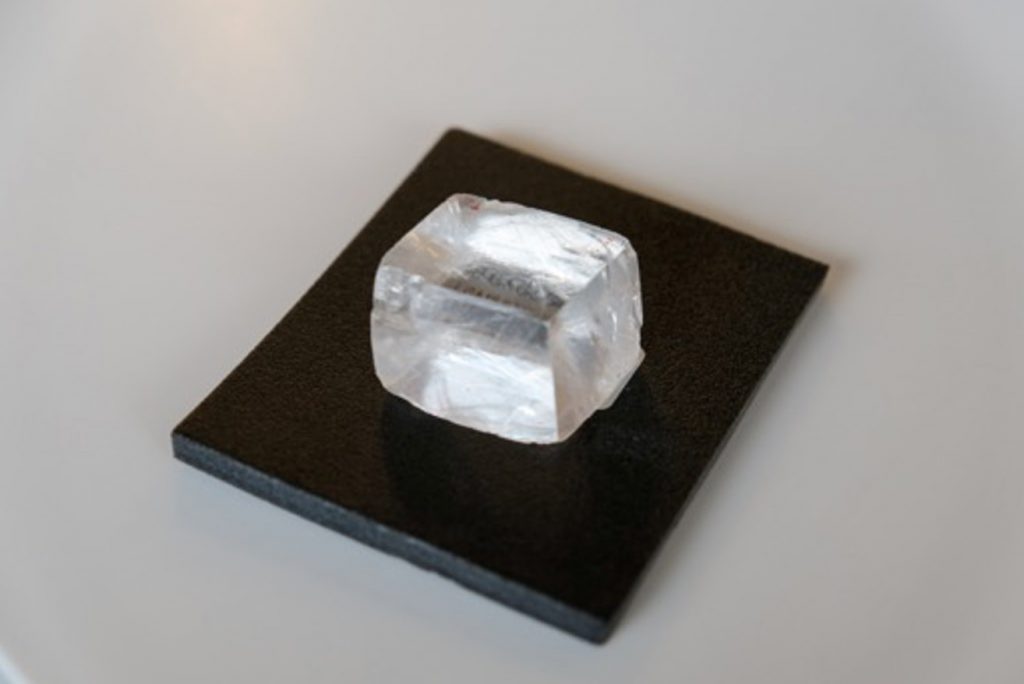
Beware, hot stoves
How to handle such high temperatures and pressures? The hydrothermal lab can reach 2000 bars – the pressure undergone by rocks 7 km below the surface – and 800 °C! To resist the highest pressures, tubes – called bombs – of stellite are used, which resist explosion up to temperatures of 850 °C under pressure. One of these tubes, broken, is prominently displayed next to the installation: it reminds the experimenters that manipulations at these levels of pressure and temperature are eminently dangerous and that the name of these tubes is no coincidence! These tubes are supposed to be almost unbreakable, but this one exploded violently when it cooled down too quickly in contact with water…
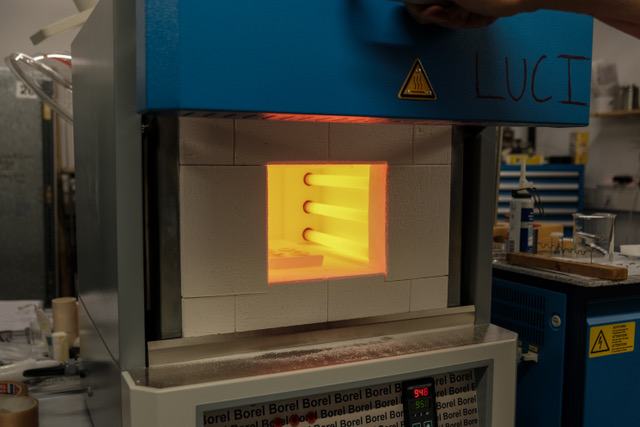
In the furnaces, the samples to be studied can also take placed in mini-tubes of gold or platinum: these metals react very little and resist temperatures up to 1560 °C.
In this laboratory, it is also possible to study the composition of minerals and the reaction of water heated to very high temperatures, in order to reconstruct the pressure and temperature conditions experienced by metamorphic rocks. The composition of fluids is for example essential to understand the fluid-rock interactions in geothermal systems. The diffusion rate of the elements is also determined here: it allows to evaluate the critical temperatures and pressures (called critical constants), which give an idea of the stability time of the minerals according to the conditions they go through.
The tour ends here, and if you want to know more, follow the team’s results!

